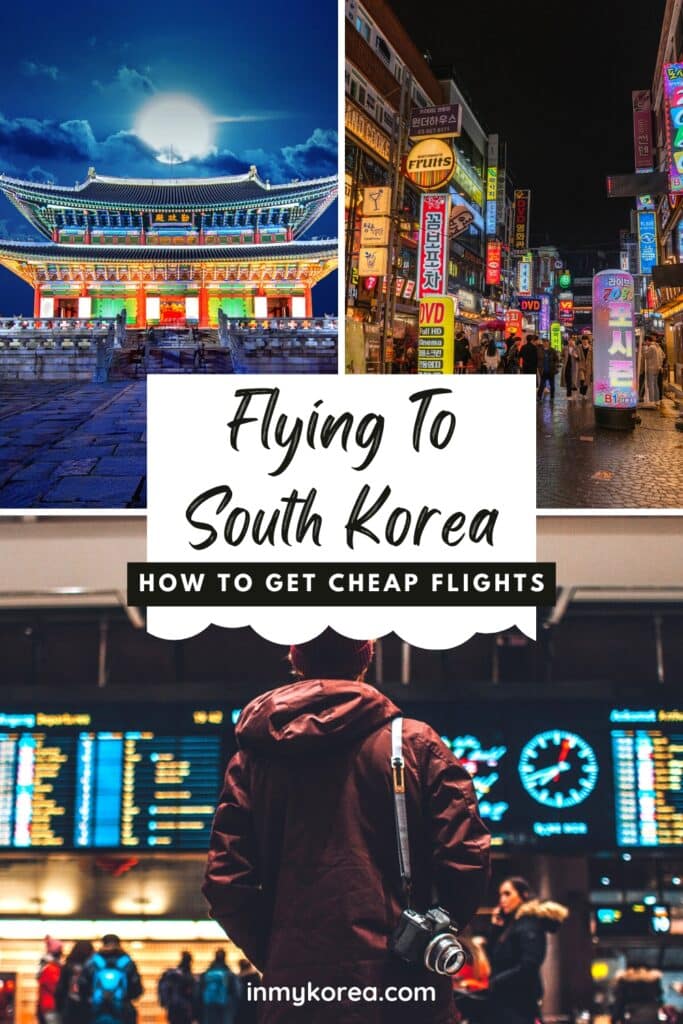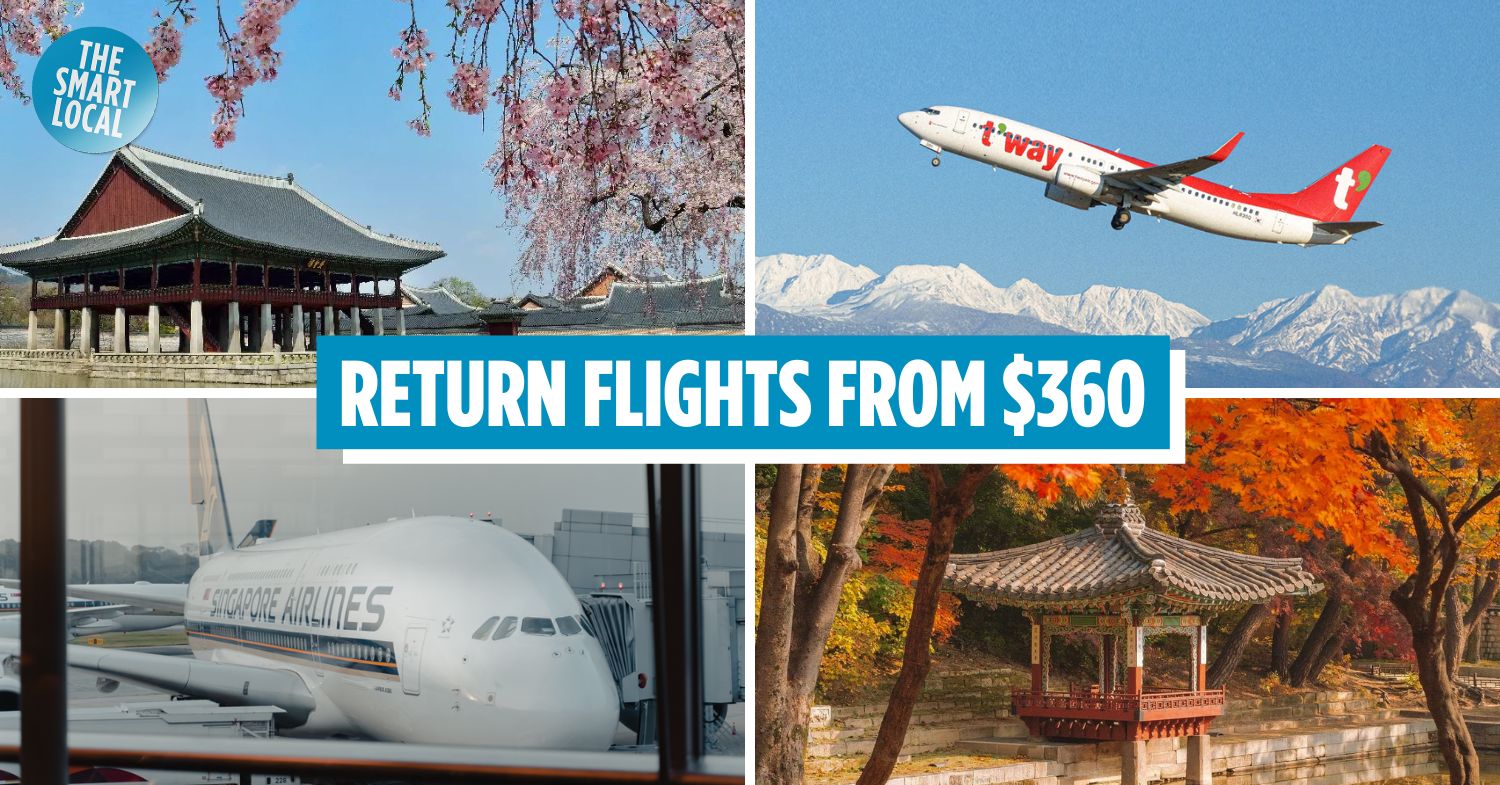
South Korea, the land of K-pop, kimchi, and captivating contrasts, has become a global travel hotspot. From bustling metropolises to serene mountain landscapes, the country offers a diverse and enriching experience. The good news for budget-conscious travelers? You can explore the beauty and excitement of South Korea without breaking the bank. This comprehensive guide will equip you with everything you need to plan an affordable adventure, from snagging those coveted cheap flights to navigating the country like a local.
1. Snagging Those Coveted Cheap Flights: The Art of the Deal
The biggest chunk of your travel budget typically goes towards airfare. Securing cheap flights to South Korea requires a strategic approach and a bit of flexibility. Here’s how to maximize your chances:

Related Articles about South Korea on a Shoestring: Your Guide to Affordable Adventures:
- Yogyakarta: The Soul of Java – A Complete Guide
- A Kaleidoscope of Wonders: Exploring the Top Attractions of the United States
- Singapore: The Lion City’s Sparkling Embrace – A Comprehensive Travel Guide
- The Golden Gate Beckons: A Comprehensive Travel Guide to San Francisco
- Kenya: Beyond the Safari – Unveiling the Best Hotels and Unforgettable Experiences
- Be Flexible with Dates: The most crucial factor. Flying during the shoulder seasons (spring – April-May, and autumn – September-October) generally offers lower prices compared to peak seasons (summer and holidays). Mid-week flights (Tuesday, Wednesday) are often cheaper than weekend departures.
- Utilize Flight Comparison Websites: Websites like Google Flights, Skyscanner, Kayak, Momondo, and Expedia are your best friends. They scan various airlines and travel agencies to find the lowest fares. Use their flexible date search options to see price variations across a month or even a year.
- Consider Budget Airlines: Several budget airlines operate routes to South Korea, including AirAsia, Scoot, and Jeju Air. While you might need to pay extra for baggage and meals, the base fares can be significantly cheaper. Be sure to factor in these add-ons when comparing prices.
- Sign Up for Price Alerts: Once you have a general idea of your travel dates, set up price alerts on your chosen flight comparison websites. You’ll receive email notifications when prices fluctuate, allowing you to pounce on deals when they arise.
- Look for Connecting Flights: Direct flights are convenient but often pricier. Connecting flights, even with a layover, can save you a significant amount of money. Consider flying into a major hub like Incheon International Airport (ICN) and then connecting to your final destination within South Korea.
- Book in Advance (But Not Too Far in Advance): Generally, booking flights 2-3 months in advance is a good sweet spot. Booking too far in advance might not always yield the lowest prices, as airlines may adjust prices based on demand.
- Consider Package Deals: Websites like Expedia and other travel agencies sometimes offer package deals that bundle flights and accommodation. These can sometimes be more economical than booking everything separately.
- Check for Seasonal Sales: Airlines and travel agencies often hold sales during specific times of the year, such as the new year, anniversaries, or after major holidays. Keep an eye out for these promotions.

2. Top Attractions: Experiences Without Breaking the Bank
South Korea boasts a wealth of attractions catering to diverse interests. Here are some top picks that won’t drain your wallet:
- Seoul: The vibrant capital city offers a dazzling array of experiences:
- Gyeongbokgung Palace: Explore the largest and most beautiful of Seoul’s five grand palaces. Entry is affordable, and you can rent a hanbok (traditional Korean dress) for free entry and stunning photo opportunities.
- Bukchon Hanok Village: Wander through a charming village of traditional Korean houses (hanoks), offering a glimpse into the past. It’s free to explore, but be mindful of residents.
- Insadong: Immerse yourself in the cultural heart of Seoul, with traditional crafts, tea houses, and art galleries. Window shopping is free, and you can sample delicious street food at affordable prices.
- Myeongdong: A shopper’s paradise, Myeongdong offers a wide variety of affordable fashion, cosmetics, and street food. The atmosphere is electric, especially at night.
- N Seoul Tower: While the tower itself has an entry fee, the views from the base of Namsan Mountain are free. You can hike up or take a bus for a small fee.
- Gangnam: Experience the glitz and glamour of Gangnam, made famous by Psy’s "Gangnam Style." Explore the trendy shops, cafes, and entertainment venues.
- War Memorial of Korea: Learn about the Korean War and other conflicts through exhibits and outdoor displays. Entry is free.
- Busan: South Korea’s second-largest city, Busan, offers a coastal escape:
- Haeundae Beach: Relax on the golden sands of Haeundae Beach, one of Korea’s most famous beaches.
- Gamcheon Culture Village: Explore a colorful hillside village with art installations and stunning views. The entry fee is minimal, and you can purchase a map to guide your exploration.
- Jagachi Fish Market: Immerse yourself in the bustling atmosphere of Jagachi Fish Market, where you can buy fresh seafood and have it prepared on the spot.
- Taejongdae Park: Hike through Taejongdae Park, offering breathtaking coastal scenery and views of the sea.
- Beomeosa Temple: Visit a historic Buddhist temple nestled in the mountains.
- Jeju Island: A volcanic island with stunning natural beauty:
- Seongsan Ilchulbong (Sunrise Peak): Hike to the top of this volcanic crater for panoramic sunrise views.
- Manjanggul Lava Tube: Explore a fascinating lava tube cave.
- Cheonjeyeon Falls: Admire the cascading waterfalls.
- Jeju Folk Village: Experience traditional Jeju culture and architecture.
- DMZ (Demilitarized Zone): A poignant and thought-provoking experience, you can take a guided tour to the DMZ and learn about the Korean War and the division of the peninsula.
3. A Glimpse into History: Unveiling Korea’s Past
Understanding South Korea’s history enhances your travel experience. Here are some key historical periods to be aware of:
- Ancient Kingdoms (Goguryeo, Baekje, Silla): From the 1st century BC to the 7th century AD, these kingdoms shaped the Korean peninsula. Explore historical sites like the Bulguksa Temple in Gyeongju, a UNESCO World Heritage site showcasing Silla dynasty architecture.
- Goryeo Dynasty (918-1392): This dynasty fostered art, culture, and Buddhism. Visit the Goryeo Royal Tomb in Gaeseong (North Korea, accessible via tours) or explore the cultural artifacts in museums.
- Joseon Dynasty (1392-1897): This dynasty emphasized Confucianism and built many of the palaces and temples that remain today. The Joseon period is also known for its strong influence on Korean traditions and culture.
- Japanese Colonial Rule (1910-1945): A period of hardship and oppression. Visiting historical sites like the Seodaemun Prison History Museum in Seoul provides a sobering perspective.
- Korean War (1950-1953): This devastating conflict divided the Korean peninsula. The DMZ is a stark reminder of this conflict.
- Modern South Korea: Witness the remarkable economic growth and cultural influence that has transformed South Korea into a global powerhouse.
4. Travel Tips for the Savvy Budget Traveler
- Learn Basic Korean Phrases: While English is spoken in tourist areas, knowing basic Korean phrases like "hello" (annyeonghaseyo), "thank you" (gamsahamnida), and "how much?" (eolmayeyo?) will enhance your interactions and potentially help you negotiate prices.
- Utilize Public Transportation: Seoul and Busan have excellent and affordable public transportation systems, including subways and buses. Purchase a T-money card for easy access and discounted fares.
- Embrace Street Food: South Korea’s street food scene is legendary and incredibly affordable. Try tteokbokki (spicy rice cakes), kimbap (seaweed rice rolls), hotteok (sweet pancakes), and odeng (fish cakes).
- Look for Free Activities: Many museums offer free admission on certain days or evenings. Parks, temples, and historical sites often have free areas to explore.
- Take Advantage of Free Wi-Fi: Most cafes, restaurants, and public spaces offer free Wi-Fi.
- Shop at Local Markets: Explore local markets like Namdaemun Market and Gwangjang Market in Seoul for affordable souvenirs, clothing, and food.
- Use the KakaoTalk App: KakaoTalk is the most popular messaging app in South Korea, widely used for communication, transportation, and payments.
- Take Advantage of Free Walking Tours: Several cities offer free walking tours led by locals, providing a great introduction to the city’s history and culture.
- Pack Light: Avoid checked baggage fees by packing light and using a carry-on bag.
5. Accommodation Options for Every Budget
- Hostels: Hostels are a great option for budget travelers, offering dorm beds and private rooms at affordable prices. They are a great way to meet fellow travelers.
- Guesthouses: Guesthouses often provide private rooms with shared bathrooms or en-suite facilities. They offer a more intimate experience than hostels.
- Love Motels: These budget-friendly motels are prevalent in South Korea, offering basic but clean accommodations. They can be a good option for couples.
- Capsule Hotels: These minimalist hotels offer individual sleeping capsules, perfect for solo travelers on a budget.
- Local Guesthouses (Minbak): Experience Korean hospitality by staying in a traditional guesthouse (minbak), often in rural areas.
- Airbnb: Airbnb offers a wide range of accommodation options, from private rooms to entire apartments.
- Consider Location: Accommodation prices vary depending on the location. Staying slightly outside the city center can save you money while still providing easy access to attractions via public transportation.
6. Navigating the City: Transportation Made Easy
- Subway: Seoul and Busan have efficient and extensive subway systems, the fastest and most affordable way to get around.
- Buses: Buses complement the subway system, reaching areas not covered by the subway.
- Taxis: Taxis are readily available, but they can be more expensive than public transportation. Use official taxis with a meter.
- KTX (Korea Train eXpress): High-speed trains connect major cities, offering a comfortable and relatively fast way to travel between destinations. Book in advance for the best prices.
- Rental Bikes: Consider renting a bike to explore certain areas, especially in parks and along the river.
7. Best Time to Visit: Weather, Crowds, and Costs
- Shoulder Seasons (April-May & September-October): These are the ideal times to visit. The weather is pleasant, the crowds are smaller, and prices are generally lower. Spring offers blooming cherry blossoms, while autumn showcases stunning fall foliage.
- Summer (June-August): Hot and humid, with potential for typhoons. Prices are higher, and crowds are larger, especially during school holidays.
- Winter (November-March): Cold and dry, with occasional snowfall. Skiing is popular in the mountains. Prices are generally lower than in summer, but it can be very cold.
Conclusion:
South Korea is a captivating destination that offers a wealth of experiences for travelers on a budget. By utilizing these tips, you can plan an unforgettable trip filled with cultural immersion, delicious food, and breathtaking sights without breaking the bank. Embrace the adventure, and prepare to be amazed by the beauty and charm of this dynamic and welcoming nation. Enjoy your Korean adventure!





